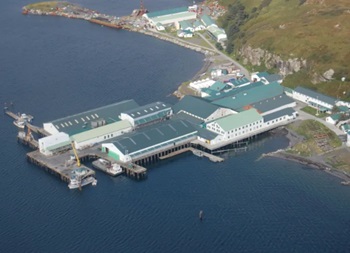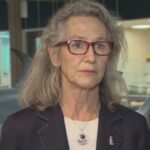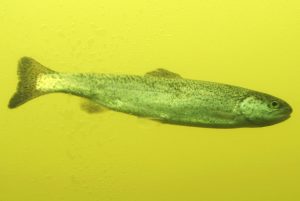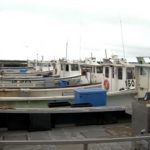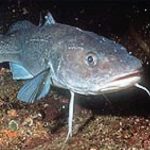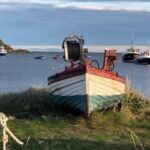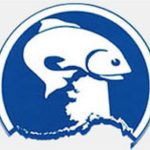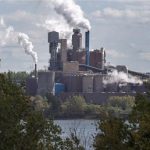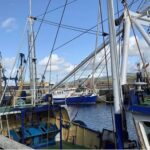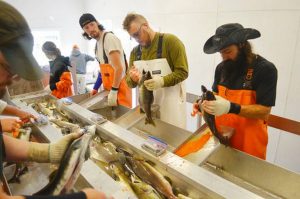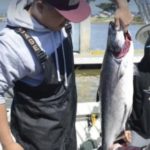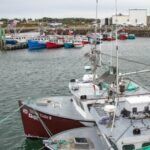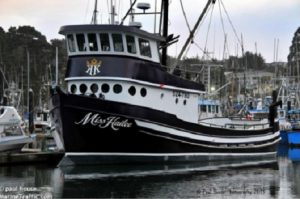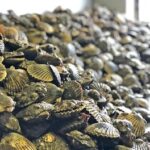Tag Archives: Kodiak
Pot Half Full: Cordova boats find success in Kodiak crab despite uncertainties
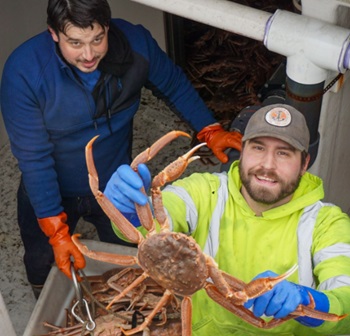 As crab fisheries around the state become increasingly unstable over the last two years, fishermen have found reliable opportunities in Kodiak. Several Cordova vessels and captains journeyed to Kodiak this past month to participate in the 2024 Kodiak tanner crab fishery, a state fishery managed by the Alaska Department of Fish and Game (ADF&G). The fisheye opened at noon on Jan. 15 and closed on Jan. 21. This year Guideline Harvest Levels (GHL) allowed for 3,480,000 pounds of crab to be harvested by the fleet, down from the 7,300,000 pounds GHL in 2023. Last year the fleet staged a strike over the low grounds price of crab resulting in more than a week’s delay to the season. Although the price rose only marginally this season, the fleet went fishing on the regularly scheduled opener. Photos, more, >>click to read<< 14:37
As crab fisheries around the state become increasingly unstable over the last two years, fishermen have found reliable opportunities in Kodiak. Several Cordova vessels and captains journeyed to Kodiak this past month to participate in the 2024 Kodiak tanner crab fishery, a state fishery managed by the Alaska Department of Fish and Game (ADF&G). The fisheye opened at noon on Jan. 15 and closed on Jan. 21. This year Guideline Harvest Levels (GHL) allowed for 3,480,000 pounds of crab to be harvested by the fleet, down from the 7,300,000 pounds GHL in 2023. Last year the fleet staged a strike over the low grounds price of crab resulting in more than a week’s delay to the season. Although the price rose only marginally this season, the fleet went fishing on the regularly scheduled opener. Photos, more, >>click to read<< 14:37
Fishermen and community leaders react to Trident announcement to sell a third of its Alaska plants
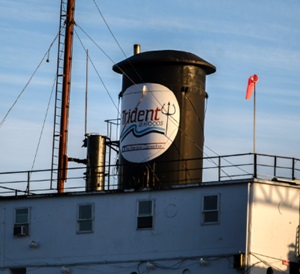 Gerry Cobban Knagin is a commercial fisherman. She and her family have fished around Kodiak and sold their harvest to Trident Seafoods, one of the largest seafood processors in the country, on and off for decades. But on Dec. 12, the company announced it’s selling off about a third of its Alaska processing plants, including their year-round facility in Kodiak. She said the announcement was a huge shock for almost everyone on the island. “Speaking with [Trident] management, there wasn’t any heads up for anyone,” Knagin said. “And they decided, according to management, that they wanted full transparency so that the fleet would know.” Photos, more, >>click to read<< 20:44
Gerry Cobban Knagin is a commercial fisherman. She and her family have fished around Kodiak and sold their harvest to Trident Seafoods, one of the largest seafood processors in the country, on and off for decades. But on Dec. 12, the company announced it’s selling off about a third of its Alaska processing plants, including their year-round facility in Kodiak. She said the announcement was a huge shock for almost everyone on the island. “Speaking with [Trident] management, there wasn’t any heads up for anyone,” Knagin said. “And they decided, according to management, that they wanted full transparency so that the fleet would know.” Photos, more, >>click to read<< 20:44
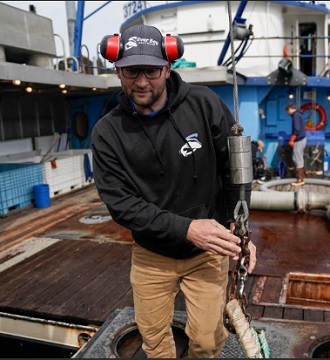
Alaskan fishers fear another bleak season as crab populations dwindle in warming waters
Gabriel Prout worked four seasons on his father’s crab boat, the Silver Spray, before joining his two brothers in 2020 to buy a half-interest plus access rights for a snow crab fishery that’s typically the largest and richest in the Bering Sea. Then in 2021, disaster: an annual survey found crabs crashing to an all-time low. Kevin Abena, who runs a fishing business with his father, also relies on tendering to stay afloat in the wake of the crab fishery closure. His vessel Big Blue, which his father built in the late 1970s, stopped fishing for most crab in Bristol Bay in 2010, but they still own access rights and take a percentage from other boats that fish their quota. Abena also fishes for halibut and black cod.>>click to read<< 12:31
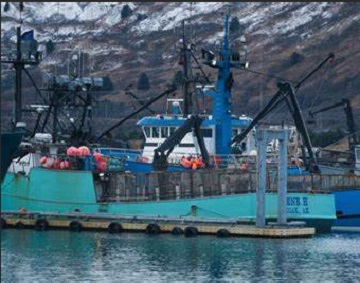
Big back-to-back years renew talks of Kodiak Tanner crab protections
The last two years have been big for Kodiak Tanner crab fishermen. Processors offered a record of more than $8 per pound back in 2022. And this year’s harvest levels were the highest they’ve been since 1986, making it the largest crab fishery in the state. But all that attention has also renewed discussions about how to best manage – and protect – the fishery going forward. Back in January, boats sat on anchor waiting to offload their huge crab harvests at Kodiak processors – sometimes for a week or more. Kodiak’s Tanner crab population tends to fluctuate. But when numbers are good, the season opens in mid-January. More than 130 vessels participated in this year’s fishery. Peterson said it’s welcome work for skippers and crew. >click to read< 08:02
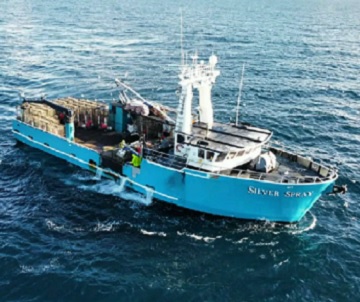
Crab season closures ‘devastating’ for Bering Sea fishing family
For Kodiak’s Gabriel Prout, crab fishing is both an occupation and a way of life. “There’s something special about being on the water and being a Bering Sea crab fisherman,” said Prout, whose father spent 45 years fishing on the Bering Sea. “It’s kind of hard to explain. There is a deep appreciation for what we do and the resource and the job and the work we put in.” In the summer of 2020, Prout and his brothers purchased a boat and took out loans to buy fishing rights. But in the fall of 2022, his family was hit with multiple setbacks. Not only had the Alaska Department of Fish and Game canceled the Bristol Bay red king crab season for the second year in a row, the Bering Sea snow crab season was also canceled. Video, >click to read< 14:04
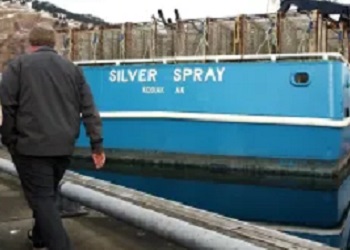
10 billion snow crabs disappeared from the Bering Sea. Scientists and fishermen are working together to understand why
The snow crabs’ population in the Bering Sea off the western coast of Alaska has fluctuated for decades. An increase in young crabs back in 2018 gave way to optimism that fishing would be good for years to come, but the hope was short-lived. Gabriel Prout and his family own the fishing vessel Silver Spray in Kodiak, Alaska. He said it was obvious something was wrong the last few years. The Bering Sea fishing grounds are usually covered in sea ice in the winter. But there wasn’t much ice, and they fished further north than usual. Finding snow crabs was still difficult. “It was just very poor fishing,” said Prout. “We searched for miles and miles and miles and really didn’t see anything.” >click to read< 10:15

Coast Guard rescues 2 from fishing vessel taking on water near Cape Chiniak, Alaska
Kodiak, Alaska — The Coast Guard rescued two mariners Sunday after their vessel began taking on water in the vicinity of Cape Chiniak. A Coast Guard MH-60 Jayhawk helicopter aircrew hoisted both survivors at 9:11 a.m. and transported them in stable condition to awaiting emergency medical services at Air Station Kodiak. They were then transferred to Providence Kodiak Island Medical Center for further medical assessment. Watchstanders at the Coast Guard Sector Anchorage command center received notification at 8:00 a.m. Sunday that the 64-foot commercial fishing vessel, F/V Alitak was taking on water with two people aboard. >click to read< 18:35

Kodiak lawmakers outline fishery-related accomplishments and ambitions
A bill that passed the Alaska Legislature last year has already started to benefit the fishing industry, and more fishing-specific bills are in the works this year, state lawmakers representing Kodiak said on Friday at an industry conference. Alaska Senate President Gary Stevens, a Republican leading a bipartisan majority, told the audience at ComFish Alaska that he is particularly proud of a bill he sponsored that expands allowable tax credits for investments in equipment to process seafood beyond salmon and herring. The bill expanded allowable seafood-production tax credits to investments in equipment for pollock, Pacific cod and sablefish, also known as block cod. Previously, only salmon- or herring-related investments were eligible for those credits. >click to read< 08:55
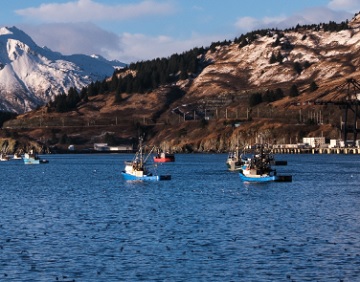
After a highly anticipated start, Kodiak’s Tanner crab season is almost over
Kodiak’s Tanner crab fleet spent the first two weeks of the season tied up at the docks, awaiting better prices from local seafood processors. And after a highly anticipated opener just over a week ago on Jan. 30, the season is nearly over; most of the fishery had closed by the end of the weekend. Fisherman Eddie Perez was selling Tanners from his boat, the F/V Vero Victoria, on Monday morning. He had about 500 crabs on board when he pulled up to the dock – and he expected to sell out by noon. “Everybody’s been really excited, happy that local fishermen are offering to the community and it’s been going really good,” said Perez. >click to read< 15:53
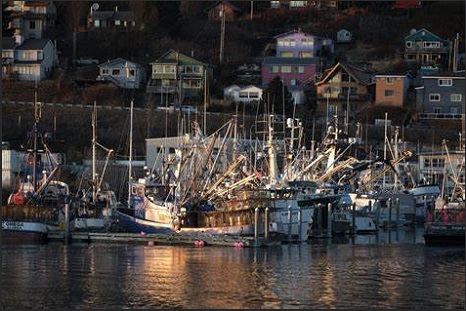
Victory! After a 2 week stand down, Kodiak’s Tanner crab strike is over
Each of Kodiak’s four canneries offered slightly different deals – Alaska Pacific Seafoods agreed to $3.35 per pound plus a retro payment – which can boost the final payout to fishermen after the season. Pacific Seafood also agreed to $3.35 per pound with a possible retro to fishermen. OBI settled with crabbers for $3.25 plus profit sharing, and Trident Seafoods stayed at $3.25 per pound. It wasn’t exactly the deal Kodiak crabbers were hoping for, and some boats from Kodiak may still take their crab out west where processors are offering slightly more per pound. But ultimately, 80% of those in attendance at Saturday’s meeting agreed, it was time to go fishing. “We stuck together, we’re gonna roll this thing out together, and we’re looking at it as a victory,” >click to read< 13:11

“We’re solid. We’re unified” – Inside Kodiak’s crab standoff
The nearly 6-million-pound quota was the highest in decades. And some people spent more than $100,000 to buy a permit to fish this year, said Kevin Abena, one of the leaders of the Kodiak Crab Alliance Cooperative. But fishermen’s hopes for a banner season are now in limbo, as the 130 boats in the Kodiak tanner crab fleet are on strike, holding out for higher prices from the seafood processors that typically buy, package and resell their catch. But processors and industry experts say the fishermen are fighting larger market forces that make it unlikely they’ll get much more than the $3.25 a pound that Kodiak-based plants have already offered, less than half than last year’s $8 a pound price. >click to read< 10:48
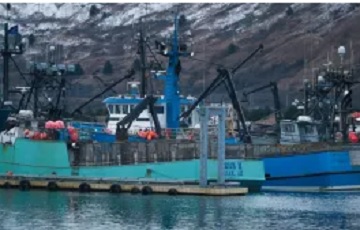
It’s been more than a week, and Kodiak’s Tanner crab stand down continues
Crabbers in Kodiak still haven’t come to an agreement with the island’s canneries on prices for this year’s harvest. And this weekend, the fleet voted again to continue standing down – with no plans to meet again until they get a better offer from processors. Kodiak’s fleet voted down an offer from local processors for $3.25 per pound for Tanners on Friday. Canneries had initially offered $2.50 per pound ahead of the season. And Sunday night, crabbers voted to press pause on the season altogether until they get a price from canneries they think is fair. “We all thought we were going to be fishing, but we all understand why we aren’t fishing,” said Kevin Abena the secretary and treasurer for the Kodiak Crab Alliance Cooperative, which represents permit holders in the fishery. “So, we’re just waiting.”>click to read< 10:59
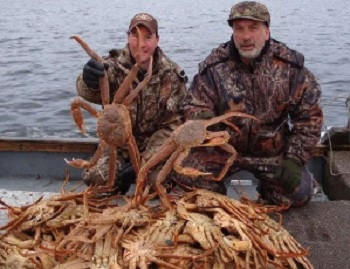
Fishermen stand together in a show of solidarity against low prices
“We have solidarity among all groups,” said Kevin Abena of Kodiak, skipper of the F/V Big Blue and secretary and treasurer for the Kodiak Crab Alliance Cooperative (KCAC) which represents 121 permit holders. Attempts to reach local processors were unsuccessful. The cooperative is now securing tenders to take the local crab to Dutch Harbor and potentially King Cove. “It’s sad for the community that every bit of this crab could be walking out of town,” Abena said. “But we are not going fishing for $2.50 a pound.” The crabbers are not facing a time crunch. The Tanner crab fishery can remain open by regulation until March 1. “We decided the 16th to stand down until the 22nd. So the earliest we will go fishing is the 22nd at noon. We have an association meeting on Friday at 6pm. >click to read< 11:05
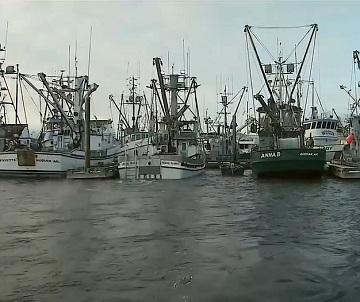
Kodiak waters remain quiet as fishermen demand higher price for crab
Captain of the F/V Isanotski Shawn Dochterman said that fishermen are not heading out to drop crab pots. “At the present time, every vessel between the Alaska Peninsula and Kodiak are standing down to get a fair and equitable price,” Dochtermann said. Commercial fishers are keeping their boats tied to the docks after Kodiak canneries offered them a $2.50 per pound price for crab this season, which is almost $6 less than they were being paid last year. Commercial fishers say they are waiting to get a better offer from the Kodiak canneries. In the meantime, they are also eying other potential opportunities. Abena said canneries in both Dutch Harbor and King Cove are offering them at least a dollar more than Kodiak canneries. Video, >click to read< 08:38
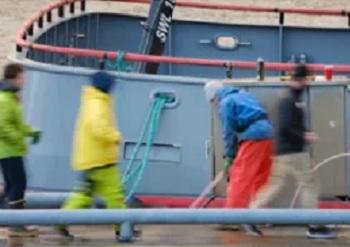
Kodiak fishermen continue to stand down amid processor price dispute
Fishermen should have been setting their gear on Sunday morning for the opening of Kodiak’s biggest Tanner crab fishery since 1986. But the boat harbor was almost full, dozens of vessels were stacked high with empty crab pots. At the coffee shop downtown right near the docks, fishermen lined up for free coffee instead. Frank Miles owns the fishing vessel Sumner Strait, a 58-foot limit seiner and has fished commercially for nearly 50 years. His first Tanner season around Kodiak was in the early 80s, when he chopped bait for a local boat. “But I never in my wildest dreams thought that we’re gonna get offered $2.50, it really is a slap in the face,” said Miles. >click to read< 07:29

Kodiak fishermen gearing up for biggest tanner crab season in decades
Kodiak’s tanner crab fishery opens on Sunday, Jan. 15 and it’s a whopper – this year’s harvest levels are the biggest they’ve been in nearly 40 years, and fishermen are gearing up for a big season in more ways than one. Darren Platt owns the fishing vessel Agnes Sabine. It’s a 48-foot seiner – normally, he goes out for salmon – sometimes herring – and this is his fourth season fishing for tanner crabs. He said this year, there’s been a buzz in both of Kodiak’s boat harbors. “It looks almost like pre-salmon season,” he said. “There’s a lot of boats that haven’t fished tanner crabs in a while, or maybe have never fished it and so they’re just getting geared up now. And so the docks have been pretty darn busy for December and January.” >click to read< 12:15
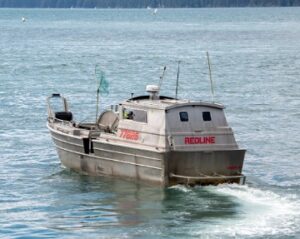
PWS harvest soars above 9M fish, statewide catch exceeds 16M salmon
Commercial harvesters in the Prince William Sound region delivered upwards of 371,340 salmon through Tuesday, June 28, while the statewide preliminary harvest exceeded 16 million fish, including deliveries in Bristol Bay, Cook Inlet, Kodiak and the Alaska Peninsula. Harvests reached almost 8% above year-to-date 2021 (2020 for pinks), led by strong sockeye harvests in the Alaska Peninsula and Bristol Bay regions, according to Sam Friedman, who is producing the McKinley Research Group weekly in-season reports on behalf of the Alaska Seafood Marketing Institute. For Prince William Sound, harvests and the weights of salmon harvested remained below the 10-year average, according to Alaska Department of Fish and Game biologist Jeremy Botz, in Cordova. >click to read< 09:06
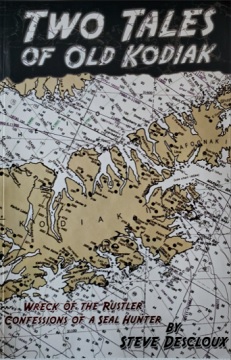
Book Release – “Two Tales of Old Kodiak”: The “Wreck of the Rustler” and “Confessions of a Seal Hunter”
Steve Descloux, a US Navy veteran who has worked in the commercial fishing, construction, and aviation industries in a myriad of roles such as welder, fabricator, equipment operator, small-plane mechanic, and airline instructor and resides in Starbuck, Washington with Diane, his wife of forty-eight years and a calico cat named Brindle, has completed his new book “Two Tales of Old Kodiak”,,, Let this author take you back with a couple memories to an earlier, wilder Kodiak, Alaska, when the seafood industry was booming and the town never went to sleep, when trappers were popular and often sold most of their prime furs to the locals and tourists, when the churches and the bars ran neck and neck in number and the congregation was always greatest in the latter. >click to read< 10:42
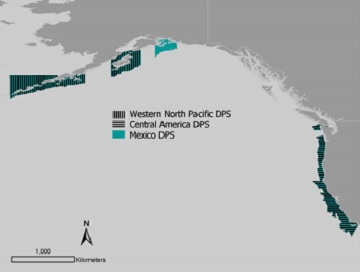
National Marine Fisheries Service designates critical whale habitat areas in Alaska and the West Coast
The National Marine Fisheries Service Wednesday published a final rule designating critical habitat for three populations of humpback whales including some areas in Alaska. The federal ruling affects the eastern Aleutians, Kodiak, Prince Williams Sound, as well as the coastlines of Washington, Oregon, and California. The rule establishes about 116,000 square nautical miles of protected area for the endangered Western North Pacific and Central American populations of humpback whales and the threatened Mexico population. >click to read< 09:14
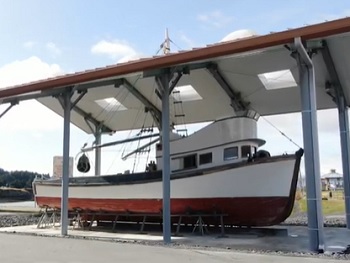
Historic fishing vessel finds home in star-built pavilion
The Thelma C was built in 1965 for the original owner, Ken Cristoffersen, by Commercial Marine in Seattle, Washington, from a design by marine architect William Garden. Utilizing a Federal relief loan to build the Thelma C following the destruction of his original vessel, the Christine, during the 1964 Great Alaskan Earthquake and tsunami, Cristoffersen went on to fish off the Thelma C until his retirement. Subsequent owners continued to use the boat for fishing purposes until 2006 when its last working owner, fisherman Mark Thomas, donated it to Kodiak Maritime Museum.,, Following the ship’s donation, plans began on the construction of a long-term exhibition site. Video, >click to read< 10:54
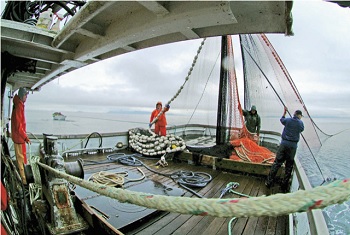
FISH FACTOR: First checks finally set for 2016 pink salmon disaster
It’s been a long time coming but payments should soon be in hand for Alaska fishermen, processors and coastal communities hurt by the 2016 pink salmon run failure, the worst in 40 years. Congress OK’d more than $56 million in federal relief in 2017, but the authorization to cut the money loose languished on NOAA desks in D.C. for more than two years. The payouts got delayed again last October,,, >click to read< 17:18
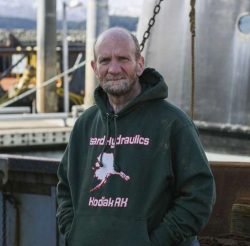
Kodiak man dives into scallop fishery – has been fishing scallops out of Kodiak for 40 years
With regards to scallops, Tom Minio could accurately be described as erudite. On Thursday afternoon, Minio sat in the galley of his vessel, the Provider, explaining what makes the best product, while the metallic screeches of boat work drifted in from other parts of the vessel. “The market really loves the big stuff, which I don’t understand. I don’t like eating big scallops,” he said. “It’s just like old halibut, you know: the bigger they are, the older they are and the tougher they are.” Minio has been fishing scallops out of Kodiak for 40 years. He started when he was 18 years old and doesn’t know anyone who’s been doing it longer than he has. With a small number of limited entry permits available and the quota around Kodiak decreasing, other fishermen and vessels dropped out of the fishery — but Minio held on. During the most recent season, the Provider was the only vessel fishing scallops in the Kodiak fishery. >click to read<14:01
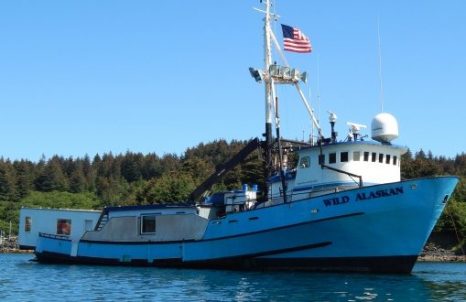
City struggles to sell unwanted former floating strip club
The city of Kodiak is trying to get rid of what has been called a former floating strip club. The P/V Wild Alaskan vessel was impounded on Dec. 20 and has been held in the Kodiak Shipyard ever since, the Kodiak Daily Mirror reported Thursday. In August, the city began advertising the vessel as available for purchase by the highest bidder, but it did not receive any bids. City Manager Mike Tvenge said nobody wants the ship. “If you look at it, it’s in need of repair,” Tvenge said. “That’s part of the reason why it was pulled out of the harbor.” >click to read<09:02

Alaska’s 2018 commercial salmon harvest 30 percent below forecast, yet some fisheries have boomed
The statewide commercial salmon harvest is about 31 percent below the preseason forecast, the Alaska Department of Fish and Game said in a statement Thursday. The 2018 season, it said, “has been unusual.” Preliminary numbers show a statewide commercial salmon harvest of about 103 million fish so far. That’s subject to change, because the fishing season isn’t completely over yet. Fish and Game’s forecast in March projected a total statewide harvest of 147 million fish. >click to read<08:03

Unexplained sockeye dropoff shuts down Yakutat fishery
Add Yakutat’s wild sockeye run to a growing list of struggling Alaska salmon stocks. The Alaska Department of Fish and Game shut down set net fishermen in the Yakutat District on Thursday after fishery managers determined less than 10 percent of the historical average have returned. Weirs on the Situk River have counted only 1,700 returning sockeye this year. That’s down from an average of 20,000. It’s the smallest return on record for this time in the year and a dropoff managers did not predict. >click to read<11:03
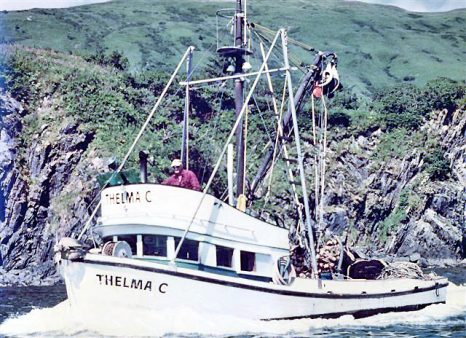
Historic Fishing Vessel Gets New Home in Downtown Kodiak
A historic fishing vessel has been given a permanent home in downtown Kodiak after 12 years of refurbishment and sitting in storage. click here to read the story, and from May 27, 2013, Kodiak’s Thelma C prepared for new home – After more than a year of restoration, the Kodiak Maritime Museum’s Thelma C is ready for its new home on the Kodiak waterfront. On Saturday, volunteers finished cleaning the Thelma C restoration site at Kodiak College, preparing the wooden fishing boat for storage until construction is finished on a permanent display stand downtown click here to read the story The Thelma C Restoration Project click here 15:33
Kodiak Sockeye Season Opens Early on June 1
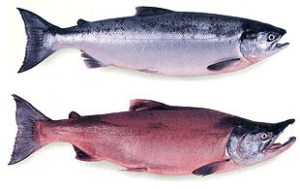 Kodiak’s commercial sockeye salmon season gets off to a bang tomorrow (today). Already this week has far exceeded expectations, with Monday setting an all time record for sockeye past the Karluk weir. On Monday, a whopping 46,000 fish hit the river, prompting fish and game biologists to reconsider the numbers and open the season early on June 1. Alaska Department of Fish and Game Kodiak Commercial Salmon Area Biologist James Jackson explains that island-wide commercial opening is based on activity at specific rivers. “In June around Kodiak the majority of the commercial salmon fisheries are managed based on the local sockeye runs. And the four big sockey runs are Karluk, Ayakulik (eye-ah-cue-lick) Upper Station and Frazier.” The biggest of those is usually the Karluk River. “And Karluk early run has come in like a bang this year,,, click here to read the story 08:23
Kodiak’s commercial sockeye salmon season gets off to a bang tomorrow (today). Already this week has far exceeded expectations, with Monday setting an all time record for sockeye past the Karluk weir. On Monday, a whopping 46,000 fish hit the river, prompting fish and game biologists to reconsider the numbers and open the season early on June 1. Alaska Department of Fish and Game Kodiak Commercial Salmon Area Biologist James Jackson explains that island-wide commercial opening is based on activity at specific rivers. “In June around Kodiak the majority of the commercial salmon fisheries are managed based on the local sockeye runs. And the four big sockey runs are Karluk, Ayakulik (eye-ah-cue-lick) Upper Station and Frazier.” The biggest of those is usually the Karluk River. “And Karluk early run has come in like a bang this year,,, click here to read the story 08:23
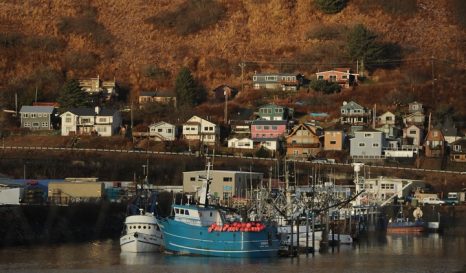
Fishy politics lures candidates of every stripe to Kodiak
The lure of reaching a statewide radio audience once again is attracting a full slate of political hopefuls to Kodiak for its popular fisheries debate. On Wednesday, five candidates for U.S. Senate will travel to the nation’s No. 2 fishing port to share their ideas on Alaska’s seafood industry. “It’s a great service to Kodiak, to our fishing communities and to Alaska in general,” said Trevor Brown, director of the Kodiak Chamber of Commerce, host of the event. “Fishing is the state’s largest private-sector employer. I think the candidates realize the importance of the fishing industry.” Since 1990, the Kodiak debates have been an election year staple for candidates running for governor and Congress, and they’ve gotten 100 percent participation. Read the story here 09:41






